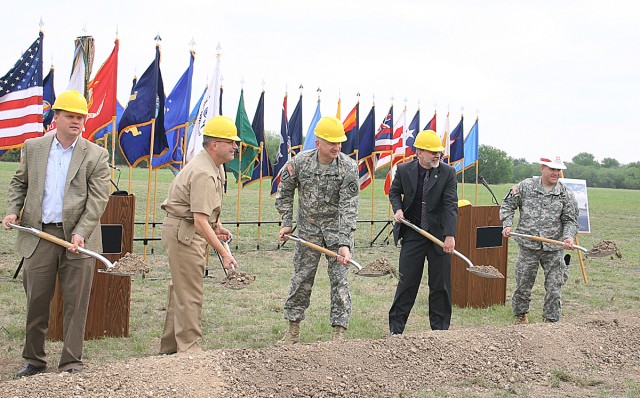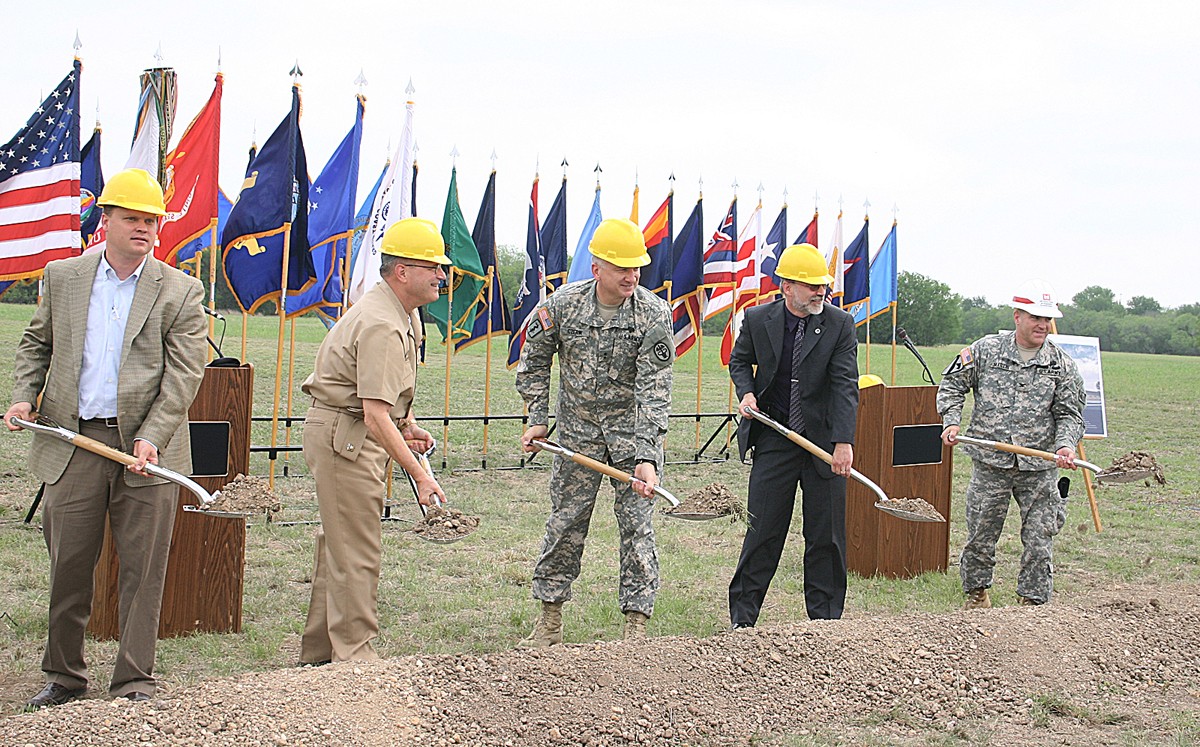(FORT SAM HOUSTON, Texas) -- The building of the Tri-Service Research Laboratory took a step forward May 6 with a groundbreaking ceremony attended by Army, Navy and Air Force leaders.
The official party for the groundbreaking ceremony included Maj. Gen. Russell Czerw, commanding general, Fort Sam Houston and Army Medical Department Center and School; Thomas Wells, director, 711th Human Performance Wing, Air Force Research Laboratory, Wright-Patterson Air Force Base, Ohio; Rear Adm. Richard Vinci, commanding officer, Navy Medicine Support Command, Jacksonville, Fla.; Scott Cannon, Skanska USA Building, Inc.; and Col. Christopher Martin, U.S. Army Corps of Engineers.
During the groundbreaking ceremony, Czerw welcomed the Navy Medical Support Command and the 711th Human Performance Wing and their colleagues to Fort Sam Houston.
"Now we begin a new era for this installation as we begin the transition to the Defense Department Center for Excellence for enlisted medical training for all of our services," Czerw said. "Now we become the home of military medicine."
Upon completion, the 181,000-square-foot facility will house Navy and Air Force research programs that address the health and safety effects of exposure to a variety of stressors. These programs currently operate in a collection of buildings at nearby Brooks City-Base.
The research lab will be built on an area of Fort Sam Houston known as Pershing Range, off Holbrook Road.
The facility will enable the Navy and Air Force to simultaneously conduct directed-energy bio-effects research. TSRL is designed to increase the military's capabilities for studying directed-energy weapons effectiveness, as well as conduct research on ways to protect servicemembers from directed-energy devices, and improve the health and safety standards for safe exposures to directed energy.
"If you think about the battlefields of the future there will be directed energy. It is going to be different, and we need to understand the effects on human beings of these directed-energy systems," Wells said.
"This is nothing new for any of the services to work in a tri-service arena, you are just seeing an extension or relocation of that," Vinci said. "When we work together, when we put shovels in the ground together, when we have commonalities, we are still three distinct services. Sometimes the effect of having people located in the same place saves the taxpayers and the government an inordinate amount of money. That's what we are doing right here. I feel that this event makes us good stewards of the government's money.
"With the new facilities we are taking a big step forward," he said. Wells added, "We bring the Army, the Navy and the Air Force all together because that is how we fight, as a joint force. In this case we will be researching as a joint force. We won't all work for the same boss, we all have our unique roles and missions, but when we put our experts together we are able to leverage each other's research and work together to solve problems."
The U.S. Army Corps of Engineers awarded the $69.9 million contract to Skanska USA Building. Skanska will oversee the construction of TSRL.
"There is one commonality that everyone has for this building that is their passion," said Cannon, a representative from Skanska. "We are going to share the passion with you. We are going to build a building that will last a very long time, and we have the best team assembled to do that."
"This facility along with multiple other construction projects put us on track to complete over $2.2 billion worth of construction on Fort Sam Houston and Camp Bullis by 2011," Czerw said.




Social Sharing